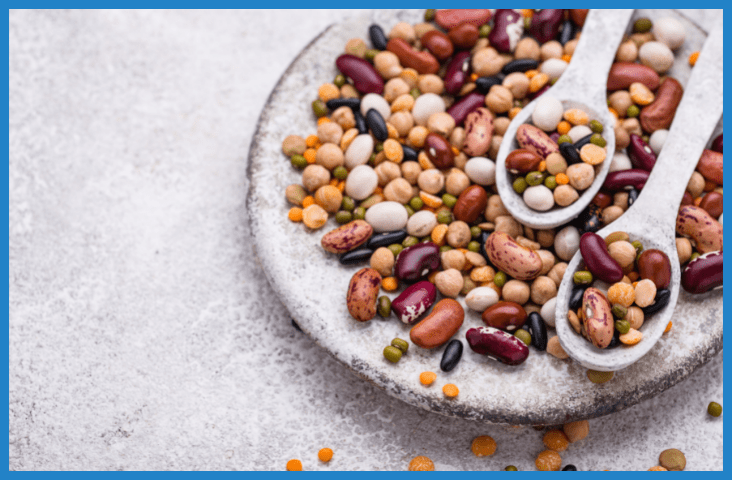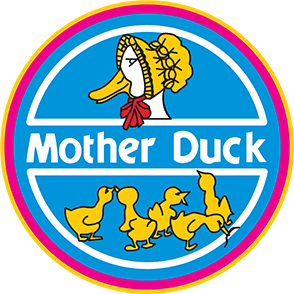
Loving the Legumes: Helping kids to enjoy the many benefits of beans
With the weather finally cooling down, and winter approaching, thoughts can turn to warming cosier meals. You may have read my previous suggestions for families to try to eat legumes such as lentils or kidney beans and thought it sounded a bit tricky. However comforting soups and stews are the perfect place to try them. Read on for some easy suggestions – including tips to stop the kids from even noticing them!
What are legumes?
‘Legume’ is a catch-all term for foods from the pea and bean families – they are edible seeds that grow in a pod. These foods are also known as ‘pulses’. They include dried peas such as split peas, and beans such as kidney or butter beans, as well as lentils, chickpeas and lupins. Dried legumes, such as chickpeas or beans that need to be soaked, are incredibly inexpensive. However many people prefer more convenient ready-prepared options, ranging from canned beans to pre-prepared lentil salads.
It may seem surprising but peanuts are also a legume. While other nuts are sometimes called ‘tree nuts’, peanuts don’t grow on a tree but underground, and their shell is a type of pod. I won’t include peanuts in this newsletter though, because we usually eat them as a nut.
It’s important to note that people who are allergic to peanuts are at an increased risk of being allergic to other legumes. While most people with a peanut allergy can eat most legumes without any problem, the risk of an allergic reaction is significantly higher with legumes from the lupin family. If your child has any issues with peanut allergy, be sure to discuss this with their doctor or allergy specialist before giving your child any foods containing legumes to eat, especially lupins.

Why are legumes so good for us?
For such small foods, legumes are powerhouses of nutrients. As you’re probably aware, they provide fantastic fibre for all the family. We all know that fibre (along with a good intake of fluid) is great for preventing constipation, which is often a problem for young children. However, the type of fibre found in legumes brings additional benefits, for both children and their parents and carers. These foods have a very low glycaemic index; this tells us that the carbohydrate they contain is slowly absorbed into the body. This means that having legumes as part of a meal can help children and adults alike to maintain energy levels for longer.
As added health bonuses for the grownups, the fibre in legumes like lentils and kidney beans can help to control cholesterol levels, and eating them regularly benefits heart health as well as lowering the risk for certain types of cancer. Research has shown that eating about three servings of legumes each week can reduce the risk of developing type 2 diabetes.
Legumes also supply our children with a great source of muscle-building protein. They contribute starch for energy, with the bonus of vitamins and minerals such as folic acid, calcium, zinc and potassium. And they are also a valuable source of iron, which is great for young children because they can be at risk of iron-deficiency anaemia.
Chickpeas, lentils and the other legumes (apart from peanuts) are so valuable nutritionally that they’re actually classed as part of two different food groups. So a bowl of baked beans counts as both a vegetable and a protein food (officially called the ‘Lean meat and poultry, fish, eggs, tofu, nuts and seeds, and legumes/beans food group).

But my kids won’t touch beans…
If your children are like mine, the thought of a meal containing lentils or chickpeas produces groans and looks of disgust. Other children, however, can be much more accepting. So you have a choice of being open and honest or choosing a way to hide the legumes so your kids can gain the benefits without them knowing.
The two ‘bean foods’ that many children will eat without complaining are baked beans and hummus. Do look for cans of baked beans that are lower in salt, or you can make your own for a healthier version. Home-cooked baked beans are quite different in taste and texture to the shop-bought ones though, so your children may not be as keen on them. Hummus is made primarily from chickpeas. It’s a great idea to compare brands to look for lower salt levels in hummus too.
Other products that contain a hefty serving of legumes include the myriad of products made with soybeans, from tofu to soymilk. Note that the more processed products, like soy milk or soy yoghurts, won’t give much of the benefit of the fibre because it’s been broken down too much. It’s best to look for products with added calcium (and possibly other vitamins and minerals) when choosing soy milk-based products.

Beanie recipe ideas
Here are some tried and tested ideas to try:
- Blend bean or lentil soups until smooth – maybe add a little cream to make it look like a cream soup. This fools my boys, who wouldn’t touch the soup if they could see the beans in it.
- Chilli con carne is an example of a food that normally contains a mix of beans and meat. However, there are many other ways to do this. Throw a handful, or a whole can, of lentils, split peas or beans such as haricot or kidney beans into meat dishes such as Bolognaise sauce, stews and casseroles. The split peas and most types of lentils will break down into the dish, and you have a choice of leaving the beans whole or mashing them so the kids can’t see them. Puy lentils don’t break down but do have a lovely texture.
- Add some salad dressing, halved cherry tomatoes and any other veg you fancy to canned three bean mix to make a salad, or toss some chickpeas into other salads.
- Blend rinsed canned butter or cannellini beans, garlic, lemon juice and olive oil (then add any herbs you or the kids enjoy) to make a white bean dip to serve with breadsticks and chopped veg.
- A family favourite (for the grownups in our house anyway) is sausages and lentils – cook sausages in a pan and then add ready-soaked or tinned lentils with a glug of red wine and/or reduced-salt beef stock. Simmer for about five minutes with halved cherry tomatoes, chopped sun-blush tomatoes, and possibly a touch of red wine vinegar. Top with chopped parsley.
- Add canned beans to taco mince, or serve Mexican foods with refried beans.
- Try some dhal, either homemade or ready-made. It can be the main event, served with rice, or a side dish for a curry.
- A classic split pea and ham soup is hard to beat as a winter warmer.
- Try bean-based veggie burger patties, or substitute some of the meat for canned or pre-soaked beans or lentils when making your own burger patties.
Feeling adventurous? You can also replace some (but not all) of the fat in foods like brownies or muffins with pureed beans. Try replacing about one-third of the butter or oil with pureed cannellini or kidney beans – as well as reducing the fat content, you’ll also boost the protein, mineral and fibre content. No, I’m not crazy; there’s actually a scientific research paper showing that brownies made using cannellini beans still taste good!

How much is too much?
Beans have a great reputation for their gastrointestinal ‘effects’! This means that anyone increasing the amount of legumes in their diet should do so gradually. A good aim is to build up to including them as part of a meal about three times a week (or more if you don’t eat meat and are more dependent on legumes as a protein source). Be reassured that any sound effects are a sign that the bacteria in your gut are digesting the fibre from the beans, and producing beneficial compounds that make your gut healthier. Note that rinsing the canning liquid off canned beans and changing soaking liquid several times if starting from dried beans will help to reduce their ‘wind-producing’ ability!
Legumes are also very filling, because of their mixture of fibre and protein. So while it’s great for young children to eat some legumes, it needs to be in moderation. Otherwise there’s a risk that children could fill up on them so much that they may not eat enough from other food groups. Be particularly cautious if your child suffers from toddler diarrhoea – you may find they can’t manage any legumes until they are a little older.

Healthy for bodies and wallets
This winter might be a great time to try adding some legumes to your family’s meals. As well as providing a great nutritional boost for our bodies, there’s also the bonus of being kind to our wallets if they replace some much more expensive food like meat.
And hopefully, your children will love them and ask for more…
For more information
The Grains and Legumes Nutrition Council has a great selection of recipes on their website, as well as information on the health benefits and other tips for using legumes.
You can also search the internet for recipes for the bean-based suggestions above. I’d love to hear of any other child-friendly legume recipes you discover!
©Fiona Hinton 2022
MEDICAL DISCLAIMER: Please note that this blog is for general information only, and should not be taken as a substitute for qualified medical advice. Please discuss medical issues with your child’s doctor before taking any action.
About Fiona: Fiona Hinton is a dietitian, but describes herself as a nutrition translator, taking the science of nutrition and translating it into foods we love to eat, to nourish both body and soul. She has over 20 years of experience as a dietitian, working in a wide range of areas from hospital wards to running her own private practice. Fiona has a special interest in children’s nutrition. As a mum of three school-age boys, she has first-hand experience of the issues associated with feeding young children, such as weaning and fussiness. Fiona specialises in real-life strategies and practical suggestions to convert nutrition advice into food kids will eat. Fiona has collaborated on several books, including one with best-selling children’s food writer Annabel Karmel, as well as training childcare staff in children’s nutrition.


